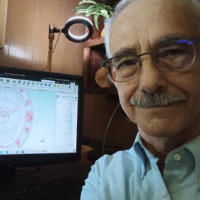Hey Harold, tell us about yourself!
"I retired in 2020 after 43 years at nVent/Hoffman. The last 28 being a CAD drafter, starting in the custom order dept. modifying standard products or creating new ones based on customers' drawings. I ended up in new product development working on new catalog items with a team of engineers and other design drafters."
What keeps you busy these days?
"I spend some of my time now doing woodworking. I used Alibre Design to design my shop work bench, a mobile workstation for my Shaper Origin, and a new base for the table saw. It’s better to prove out the design in CAD so you don’t end up just making sawdust and scrap. I’ve also used Alibre Design to design some other projects, such as a double bin utensil holder, repurposed a chest of drawers, and an attachment to mount my trim router to a wing of the table saw, that I posted in the Forum Media section."
Tell us about this submission...
"After completing scale models of some vintage carriages, trucks and steam engines, I was looking for another piece of vintage equipment to model. It was during one of my internet searches that I came across the drawings for the USS Monitor engine. The drawings were done by Richard Carlstedt based on the original drawings and the model is full size. I just happened to find them on the Home Shop Machinists Downloads page within a day or two of them being uploaded. From what I can recall, it took him 20 years to complete them. After seeing the state of some of the original drawings I can believe that. I also found more Monitor drawings online at web.stevens.edu for the propeller, propeller shaft and stuffing box."
What inspired you to tackle this?
"I find it interesting to see the drawings for vintage engines and equipment and enjoy creating models from the drawings that I can download. Some of the drawings are works of art and I think the skill to make them today may be lost. (I was in the last class that taught any board drafting at the Technical College I went to for Design Drafting.) The latest drawings I found are collections by T. Carreras Soto. Some of them can be challenging for being small parts and assemblies. And there’s always the drawings used in the SolidWorks Model Mania, I model them just to see how “difficult” they are or are not. So far Alibre Design has not had a problem with any that I’ve done."
How did you start using Alibre Design?
"At work I was receiving a free subscription to a design magazine and one day a copy of Alibre 5.0 was tucked in the magazine. I took it home to see just what it could do. At that time Alibre Design didn’t have sheet metal and since that is what I worked on all day at work it took me a while before I committed to getting a license. When I was working I used it to flesh out some designs that I was developing at work with SolidWorks and now that I’m retired I have time to work on my own woodworking projects or just modeling vintage drawings. At one time I toyed with the idea of getting a seat of SolidWorks but Alibre Design more than fills my needs for CAD now and it is only getting better. I especially like the real time previews for instant feedback when adding features."









